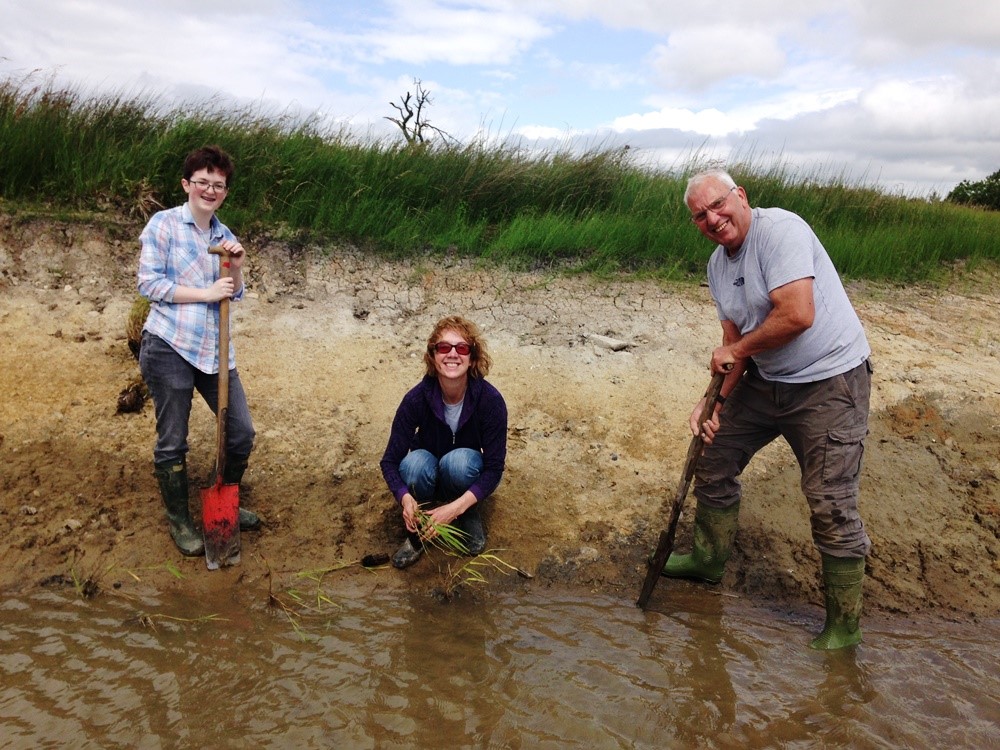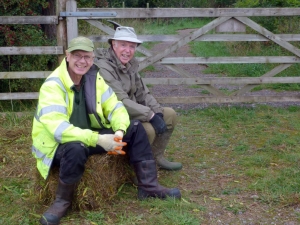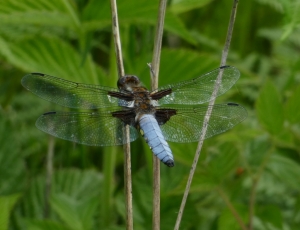Rambling through the Species
Sunday, August 7th 2016
We have walked past the ponds and said casually 'Pond Skaters'. Then we walked past the ponds and said very knowledgeably 'Instar Pond Skaters'. Photographs were taken and then the images blown up on the computer screen and a little bit of research was required. Some of our Pond Skaters are not Pond Skaters but Water Crickets.
At the minute Water Crickets seem to be living quite happily in the becks that run across the moor. The ones below are to be found in the stream leaving the wetland. There is unlikley to be many insects surviving a fall onto the surface of the water! You can see that these insects are coloured orange along their abdomens.
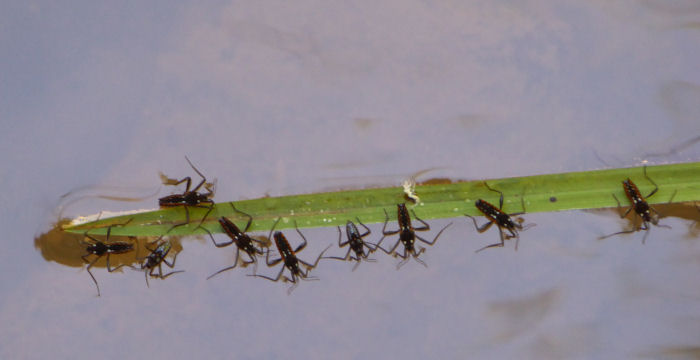
In the Scrapes we appear to have Pond Skaters.

Entering the data into IPMR (the ringing data programme) is fascinating. As the seasons progress there are changes. During May, fewer females appear as they are sitting on the nest. Now, in early August, not many adults appear and those that do, are looking a little worse for wear as they moult. Our summer migrants have different moult times to our residents, as they have to head south on migration. The bird ringers have to learn all of this as part of their training.
During CES 10 many juvenile birds were processed in the final total of 208. Twenty one different species were recorded, including Reed Bunting Garden Warbler, Willow Warbler and Chiffchaff. Numbers of Siskin, Chaffinch and Bullfinch are increasing.
One of the Sand Martins ringed nearly two weeks ago has been caught again. We are waiting to find out details.
Some insects we know, almost personally, like the Kidney Spot Ladybirds on Kidney Spot Corner. They have been a little elusive recently but some larvae have been seen walking up and down the Ash tree. Slowly they are spreading their range and being found on other trees and on bridge hand rails!
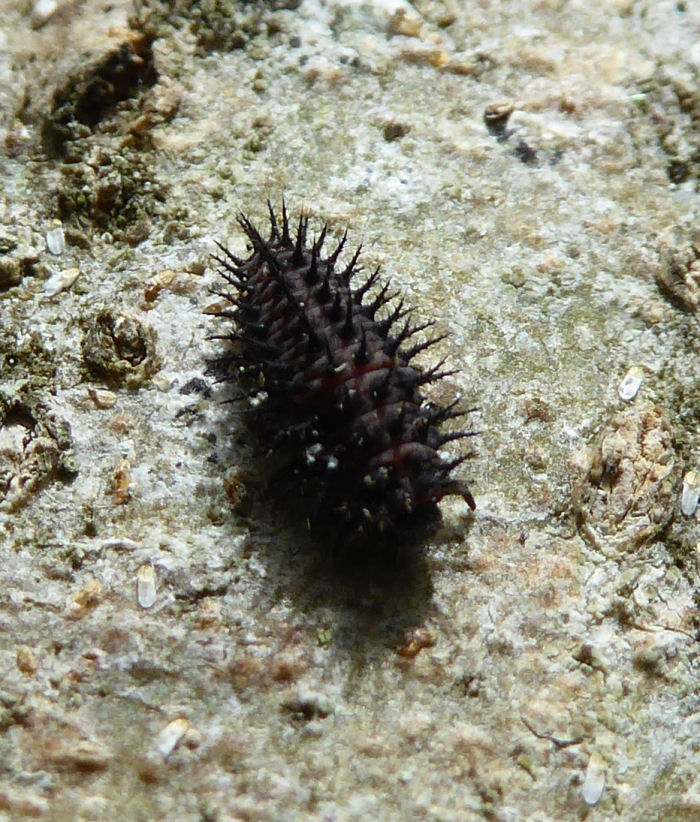
Other insect's names require more reasearch, like this one sitting on an Angelica flower head. A slight problem both for it and for me was that the wind was blowing it around, especially its very long antennae!
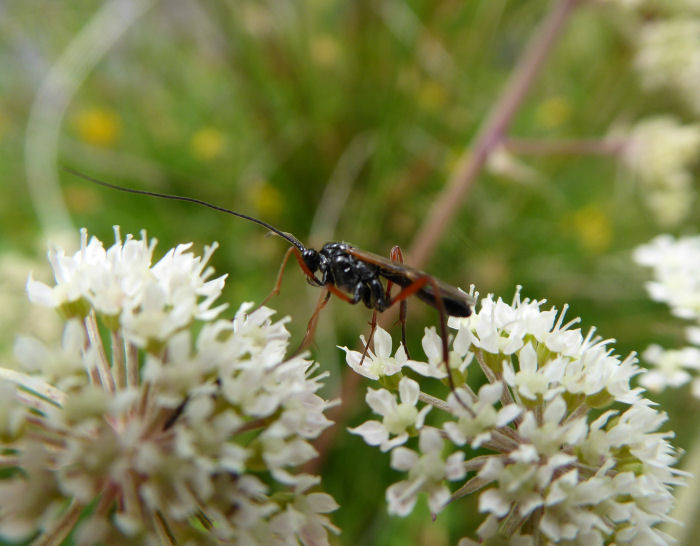
Our moth morning yet again yielded more new species and this interesting comment from Charlie Fletcher.
'Excellent trapping session at the reserve on Tuesday night. An impressive count of 158 species. 20 site records and one species (Caryocolum tricolorella) new for VC65 – it’s a pretty scarce moth whose larvae feed on greater stitchwort. Dark Umber was unexpected. It’s a buckthorn feeder and the nearest known populations are in the Ripon area. I realised there is buckthorn planted at the site but it must have come from somewhere not too far away so I wonder where the nearest wild buckthorn is.'
Unfortunately no photo is available at this time for this moth but we may catch one again, fingers crossed. Forty seven Antler moths were caught.
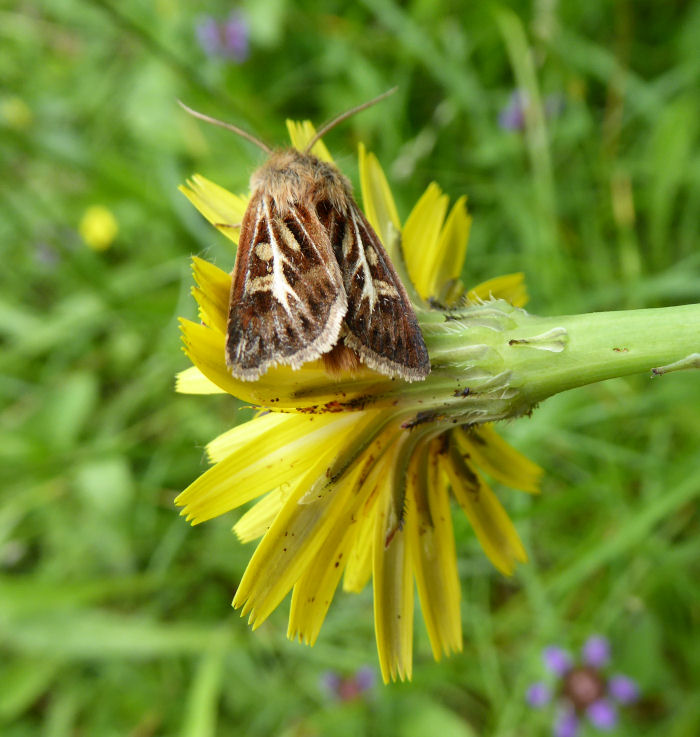
A combination of habitat management, being more observant and possibly climate change means that we can still add new species to our species list.
(0) Comments:
There are no comments for this blog post yet. Why not start the discussion? - use the form below:

